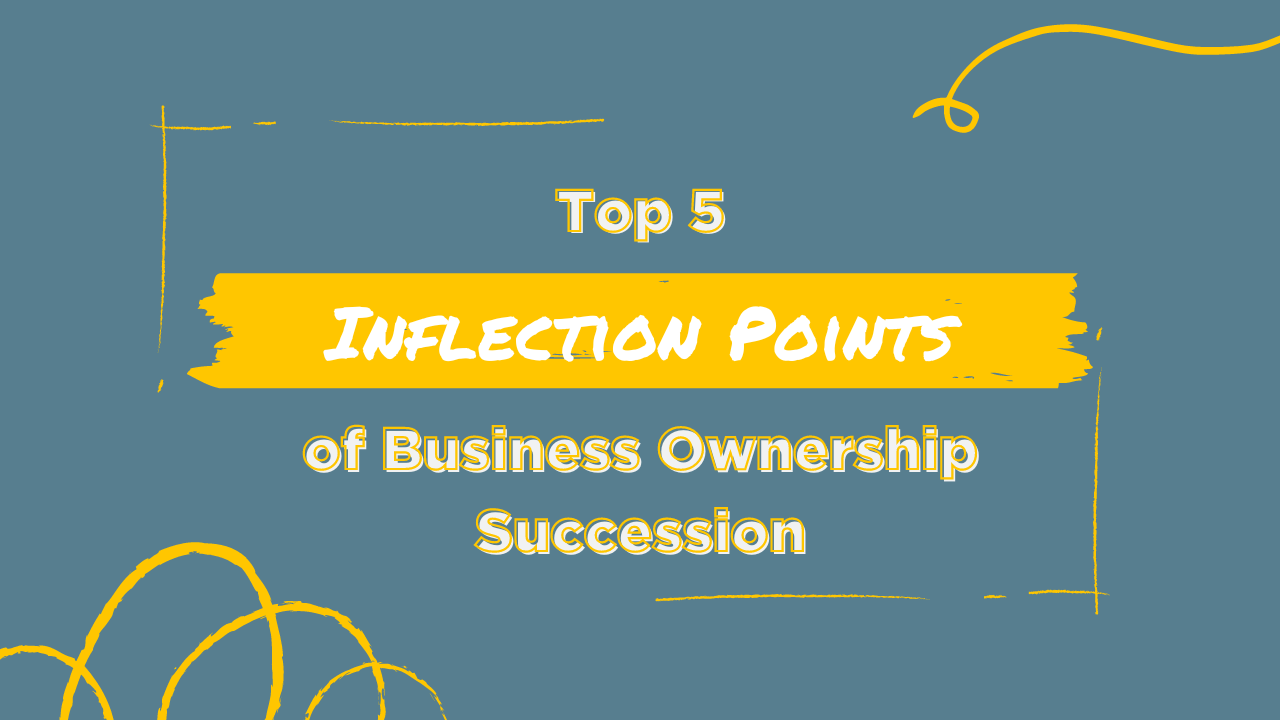
There are a lot of “moving parts” in the day-to-day management of a business. Business owners are likely wearing many hats and ownership succession may not be top of mind. However, it is a topic that must be addressed. When it does, it can be a stressful, but ultimately a worthwhile conversation.
All companies, at some point in their existence, go through an ownership transition process for a wide variety of reasons. The issue is whether it is planned for or an after-the-fact reaction to something. Proactive planning leads to outcomes that are almost always more satisfying. Time is the valuable commodity in transition planning. The more time you have, the better things will be. These are some Inflection Points that can show signals that it may be time for the consideration of a transition plan.
1. Age of the Owner(s)
The right time to exit a business is, in many cases, more a function of the state of mind of the business owner rather than chronology or health. As such, there isn’t a common timeline that business owners follow, and many may exhibit a fair amount of procrastination because they are unsure about the process or the alternatives. To make matters more complicated, in a multi-shareholder situation everyone has their own timelines for exit. It is unwise to assume that each shareholder will seek transition at the same time. Planning ahead can allow the opportunity to find the right transition strategy for all shareholders.
2. A "Hot" External Market
Business owners always seem to be aware of merger and acquisition activity. In “hot”, or active, markets this information is almost unavoidable. Hot markets may lead to rich valuation pricing multiples (a good thing!). If the marketplace is hot with business transactions, one should evaluate whether it is in its early or later stages in the cycle to manage expectations.
3. Internal Management Succession Status
Sometimes, an exit strategy is exactly what business owners want, however they haven’t discussed it with others in the company. Management transition is always a part of ownership succession discussion because it plays directly into the results. A strong management team ready to take control may signal that the Company is ready to begin its ownership transition initiative.
4. Observing Career Anxiety
At some point in the company life cycle, employees may wonder what the future holds after the owner(s) retire. This preoccupation may lead to a sense of anxiety and usually results in employees fearing the worst (they’ve heard stories!). While it may not be wise to disclose details about an ownership transition plan, companies can find a way to strike a balance between confidentiality and disclosure.
5. Observing "Value Protection Mode"
Post 2009 you have heard the sentiment: “I don’t want to go through that again!” Protecting a strong performing business is only natural. However, passing on opportunities to grow in order to protect can end up causing harm to the business (“if we don’t do it somebody else will.”). This can lead to lost market share and, ultimately, lost value.
In most cases, these inflection points may emerge prior to any discussion of ownership transition. Business owners should also be prepared in case others raise the issue when they spot one or more of these inflection points. The sooner these points are recognized, the better prepared you will be for a meaningful, open discussion. Of course, the best case is for the business owner to be completely out in front of the process, and avoid finding themselves in the position of reacting to one or more of these inflection points.
.png)








.png)




-5.png)

